Mozambique: Health Ministry hopes to vaccinate 18 million children against polio
Mozambique: Displacement influx in Cabo Delgado and Nampula provinces – Situation Report No. 1
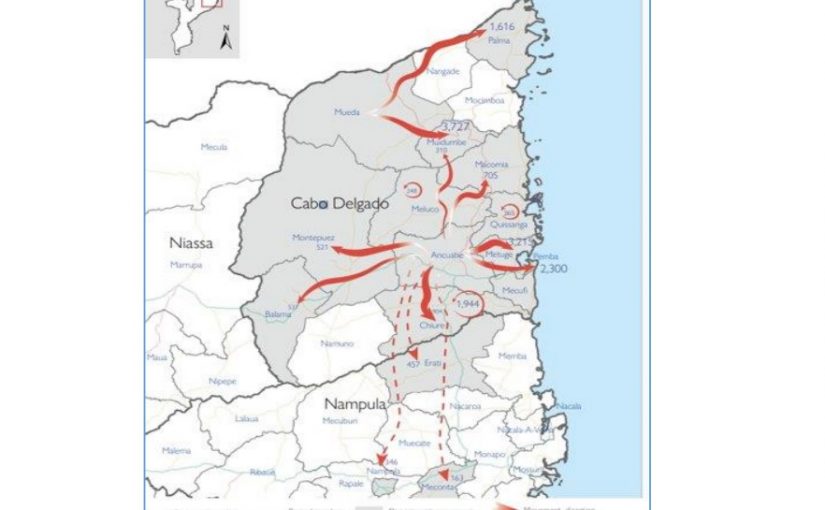
IOM/DTM Displacement movements in the month of June
- This report is produced by OCHA Mozambique in collaboration with humanitarian partners. It is issued on 24 July 2022. It covers the period from 1 June to 24 July 2022.
Highlights
- In June, a total of 83,983 people were displaced by attacks in Ancuabe and Chiure districts. The majority of people displaced, approx. 67,524 people, are women and children.
- Violence had a spill-over effect in Nampula province where 23,000 displaced people arrived, out of the total displaced.
- To date, partners have support 29,000 people with multisectoral assistance.
- In Pemba, authorities have requested the support of the humanitarian community to relocate approx. 2,000 IDPs to new resettlement sites in Ancuabe, due to concern of overcrowding conditions in Pemba.
- On 19 July, humanitarian partners met with local authorities and agreed to organize ‘go and see visits’ by IDPs to the identified relocation areas in Ancuabe. Local authorities will also consider existing sites as options to relocate other IDPs that are currently not intending to return to Ancuabe.
83,983 People displaced by violence
67,524 Women and children displaced
50,000 People targeted for assistance
29,000 People assisted
Situation overview
In June, an uptick of attacks in Ancuabe and Chiure districts triggered significant movement of population. According to IOM/DTM, a total of 83,983 people were displaced throughout June, the majority of them being women and children (67,524). As many as 69,031 of the movements recorded represent individuals displaced for the first time. Out of the total displaced, some 23,774 people were also displaced to Nampula province as result of the attacks. Main destinations of arrivals in Cabo Delgado province were Pemba and Chiure districts as well as pre-existing IDPs’ sites across Chiure, Metuge and Ancuabe districts.
In Ancuabe district where 32,000 people were displaced by violence or fear of violence, the Camp Coordination and Camp Management (CCCM) Cluster has conducted a mapping of critical needs in 29 sites of displacement. The CCCM cluster reports than an estimated 33 per cent of the newly arrived population requires shelter assistance, 23 per cent requires food assistance, 13 per cent requires access to water, and the remaining 31 per cent requires access to other needs like latrines and hygiene kits.
Due to the current influx of IDPs across Cabo Delgado province, the Government and site service providers have planned to upgrade five sites as transit centers with a capacity of 7,000 people. These are two sites in Metuge (Unidade 2 and Centro de Nacuta) and three in Chiure (Nacivare, Ocua, and Megaruma). Site service providers are actively involved in site coordination and monitoring including tracking and validating new arrivals, identifying available shelters at sites and mapping service provision.
Given the deteriorating humanitarian situation in southern Cabo Delgado, the Humanitarian Country Team has been gearing up to respond to new influxes through flexible modalities while striving to integrate the new caseloads into regular programmes. To date, approx. 29,000 IDPs have received assistance, out of 50,000 people targeted for assistance. The majority of the people were assisted in Chiure, Metuge and Montepuez.
In Pemba, where the arrival of 12,364 displaced people (including 6,128 children) adds up to the to the existing caseload of 139,566 IDPs (highest caseload in Cabo Delgado), authorities have requested the support of the humanitarian community to relocate 2,000 newly displaced people from Pemba to two areas identified for the establishment of new resettlement sites – i.e. N’naua (Metoro administrative post) and Nanona (Mesa administrative post), Ancuabe district, in an effort to decongest Pemba city. On 5 July, a joint Government and inter-agency assessment mission was undertaken to the two identified sites, to review their capacity.

The mission included OCHA, CCCM Cluster, Protection Cluster, WASH Cluster, Save the Children International and Conselho Cristão de Moçambique (CCM). In addition, from the Government, the Instituto Nacional de Gestão e Redução do Risco de Desastres (INGD), Serviços das Actividades Economicas (SPAE), Serviços Provincial de Infraestruturas (SPI) attended the mission. The mission concluded that N’naua was not a viable alternative, Differently, the site of Nanona could accommodate a limited expansion up to a maximum of 1,000 people.
The assessment team noted that as more people are expected to move into the site, less land would be available for cultivation making people dependent on food assistance. Since the site requires a number of improvements across sectors, the humanitarian community has been advocating with authorities that movements to these sites should happen only after intention surveys are concluded and analysed and basic services are put in place. Security in these locations is also key.
The Protection Cluster activated Emergency Protection Units (EPUs) to support the new arrivals. EPUs are stand-alone mobile units comprised of expert PC member staff to support identification and referral of vulnerable IDPs in neighbourhoods. On 11 July, EPUs were deployed jointly with Pemba Administration technical colleagues in three neighbourhoods of Pemba (Eduardo Mondlane, Chuiba and Cariaco) to conduct intentions surveys with recently arrived IDPs from Ancuabe into Pemba, the provincial capital, to better inform advocacy efforts aimed at ensuring that any potential returns or relocations are safe, dignified, voluntary, and informed. In total, 82 IDPs were interviewed. Results demonstrated a need to: 1) ensure better information sharing with the impacted population to ensure informed decision (few had information on upcoming plans); 2) the need to advocate for more options for IDPs (since some wanted to remain in Pemba and others be re-located to sites other than Ancuabe) and 3) advocate for greater protection support to vulnerable IDPs in Pemba.
Following discussions at the Cabo Delgado Area Humanitarian Country Team (AHCT) on options and modalities for the relocations of IDPs currently located in Pemba to Nanona site in Ancuabe, OCHA and the Protection Cluster met with local authorities who agreed to organize ‘go and see visits’ by IDPs to Nanona site and other areas going forward, in an effort to ensure access to information to IDPs and their inclusion in decision-making processes. Moreover, local authorities agreed to consider existing resettlement sites as alternative options to relocate other IDPs that are currently not intending to return to Ancuabe. Beyond the agreed points, humanitarian partners advocated for targeted humanitarian assistance to newly displaced people in Pemba city, to reduce their suffering in the face of the overcrowding conditions in the city.
Considering the latest trends of attacks and displacement, humanitarian partners are currently preparing to respond to a potential caseload of 50,000 people that may require a multi-sectoral life-saving response through a combination of immediate response and medium- to longer-term response, including both direct assistance to displaced people and support to host communities impacted by the rising number of people they are hosting.
- READ / Download the full report HERE.




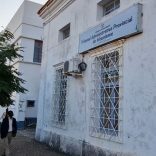
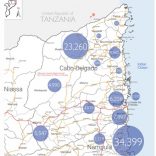

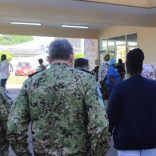
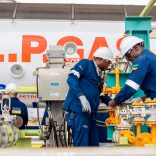



Leave a Reply
Be the First to Comment!
You must be logged in to post a comment.
You must be logged in to post a comment.